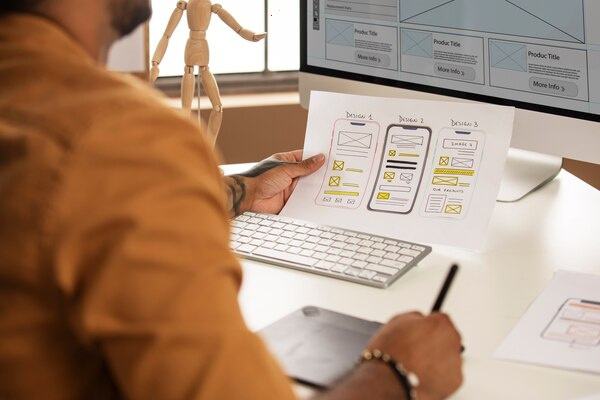Elevating Web Design Experiences in Canada

In today's rapidly evolving digital landscape, web design stands at the crossroads of technology and creativity. As businesses, artists, and developers strive to captivate and engage an audience, understanding and implementing creative approaches to modern web design becomes paramount. This article explores some key elements driving innovation in this field, providing insights and inspiration for those looking to redefine the boundaries of web aesthetics and functionality.
Emphasis on User Experience (UX)
Modern web design has seen a paradigm shift towards placing the user at the center of the experience. A seamless, intuitive interface now acts as the cornerstone of successful web design. This involves understanding user behavior through research and testing to create sites that are not only visually appealing but also functionally robust. Designers often use wireframes and prototypes to test user journeys early in the design process, ensuring that the final product meets expectations and enhances user satisfaction.
Mobile-First Design
With the rise of smartphones and tablets, ensuring that websites are responsive across all devices is no longer optional. Adopting a mobile-first approach ensures that websites are optimized for various screen sizes right from the start. This strategy typically involves simplifying the design to prioritize content, improving load times, and providing a tactile experience that takes advantage of touchscreens. The end goal is a seamless transition from mobile to desktop, maintaining functionality and aesthetics throughout.
Minimalism and White Space
Minimalist design continues to dominate web aesthetics by emphasizing simplicity and clarity. By utilizing ample white space, designs can highlight essential elements such as typography and imagery, avoiding distraction from superfluous details. This approach not only enhances readability and engagement but also contributes to faster loading times and improved overall performance. The challenge lies in balancing simplicity with beauty, ensuring that the user's journey remains engaging without unnecessary clutter.
Interactive and Dynamic Elements
Incorporating interactive elements is an effective way to enhance user engagement on modern websites. From micro-interactions to hover effects and animations, these dynamic features can guide users, provide feedback, and create memorable experiences. Designers are increasingly employing tools like SVGs or CSS animations that ensure smooth transitions without compromising site speed. Dynamic elements are particularly effective in storytelling, helping convey messages visually in an engaging way.
Incorporating AI and Machine Learning
Artificial intelligence and machine learning are making significant inroads in web design, creating more personalized user experiences. AI can tailor content, layout, and navigation based on user preferences and behavior, offering a bespoke experience that feels custom-designed. Chatbots powered by AI can enhance customer service, providing real-time assistance and resolving queries around the clock. Moreover, design tools equipped with AI capabilities can provide smart recommendations, speeding up the design process and opening up new creative avenues.
Bold Typography and Custom Fonts
Typography in web design is moving beyond the traditional avenues as designers experiment with bold, custom fonts that add personality and uniqueness to a brand's identity. Larger fonts and standout headings grab attention, while custom typefaces provide a distinctive look that can set a site apart from competitors. Typography goes beyond aesthetics, serving as a critical element for guiding users through the content hierarchy, enhancing scannability, and retaining user attention.
Sustainability in Web Design
With increasing awareness of environmental concerns, sustainable web design is gaining traction. Designers are now considering the environmental impact of their websites, focusing on efficiency and optimization to reduce energy consumption. Sustainable practices might include minimizing resource-heavy elements, optimizing images, and selecting green hosting services. This approach not only benefits the planet but can also improve load times and enhance user experience by stripping back unnecessary elements.
In conclusion, modern web design is a tapestry woven with creativity, technology, and an understanding of user needs. By embracing these innovative approaches, designers can craft websites that are visually stunning, highly functional, and deeply engaging. As digital experiences continue to evolve, staying ahead of trends while anchoring in user-centricity will remain crucial in crafting the next generation of web experiences.